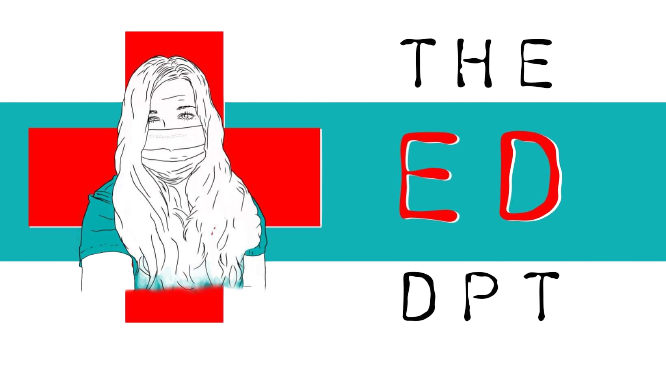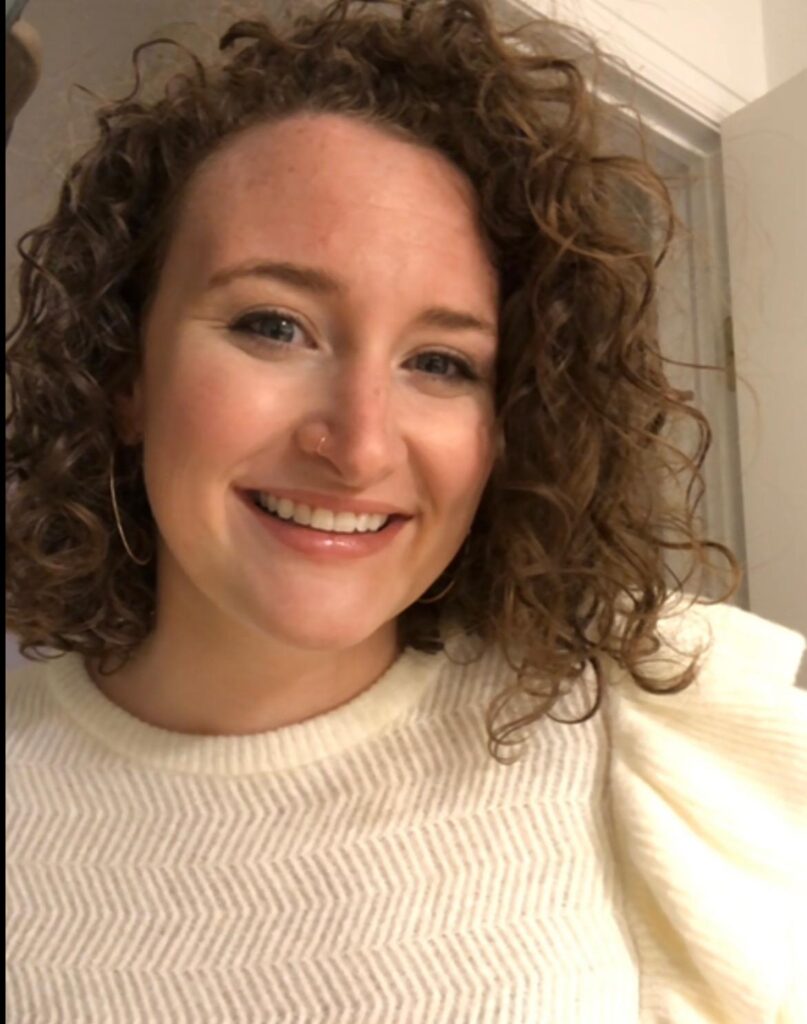We want to highlight other great professionals working in the Emergency Department Space. In honor of OT month, meet my friend & colleague, Julia.
Julia Smith, MS, OTR/L
Julia Smith is a senior occupational therapist at the University of Colorado Hospital. She graduated with her Bachelor of Science in Rehabilitation Science from the University of Pittsburgh in 2012 and continued on to complete her Master’s in Occupational Therapy from The Ohio State University in 2014. Julia’s passion is the burn/trauma population with a focus in critical care and splinting. She has been involved in multiple programs in the hospital including the COVID team, gender affirmation, and OT in the ED.
Describe how you became involved in Emergency Department Occupational Therapist Practice.
When I first started working at my current hospital, there was no structured therapy program in the ED, but we would be called down for select cases to support, as needed. Our PTs established a substantial therapy program and we were consulted much more frequently at that point. I volunteered to be part of the small team of OTs that would float down to the ED, where I worked with our PTs to advocate for OT involvement and appropriate consults. I was a relatively new grad and really loved that I felt like I could practice at the top of my scope. When the opportunity arose last summer to spend some time full time in the ED, I jumped on it.
Describe your practice setting and OT in the ED model.
I work at a large Level 1 Trauma academic medical center. The current model is that we have a PT who staffed full time in our ED. There is an OT who has a partial caseload (pending hospital census) and is assigned to cover consults, as needed. Providers can directly place a consult for us, but often PT and/or CM is consulted first and advocates for OT involvement as appropriate. We did trial staffing an OT full time. It went well, but hard to maintain due to OT staffing and high census throughout the hospital. We average around 3-4 consults/day, but it often feels like feast or famine.
Why do you think this is a valuable practice area?
In any setting, an occupational therapist’s goal is to maximize independence and facilitate quality of life for our patients. While this is a stark overgeneralization, we often see two types of patients in the ED- those who have a new injury or disease process that changes their functional status/needs, and those who have not been sufficiently caring for themselves prior to presentation at the hospital. Through our cognitive, vision, medication management, disease management, health literacy, ADL, and physical assessments, we can identify the primary barriers to safety and independence, and collaborate with the patient to decide what the best option for them is. This makes us valuable to the patient because the nature of our work is so client centered, but also valuable to our medical team because we can provide a functional perspective to the larger medical picture. We once had a PA joke, “I can’t order pizza until I run it past therapy to know that it is a good idea”. What I take from that is that, we often are a realistic voice about how to help a patient succeed outside of their direct diagnosis, and our providers see the value in us, too!
What was the biggest adjustment for you in practicing in the ED?
The biggest adjustment for me practicing in the ED was the speed in which decisions need to be made with limited information. During an evaluation in the ED, there is often little documentation beyond imaging, lab work, and either current or working diagnosis. This demands high level critical reasoning to determine safe interventions/assessments, and at times, differential diagnosis for patients who are still undergoing workup. This differs from the floor where patient charts and prior medical history are more comprehensive and can guide evaluation. I also had to adjust to the direct interaction with the attendings and providers, as I am used to more nursing communication or conveying my recommendations through the EMR.
Do you have an area of speciality? I specialize in burn, critical care, and trauma populations, as well as upper extremity splinting. I also have experience with cognitive screening and evaluation. I was one of the primary COVID therapists at the beginning of the pandemic and also participate with our gender affirmation team, so I feel comfortable treating these populations.
What barriers did you have to overcome personally and within your facility to practice successfully in this environment? Personally, I think I had to get over some imposter syndrome. I interacted directly with attending and PAs often advocating for more imaging, suggesting potential diagnosis or concerns identified in my evaluation, or insisting on admission as the safest discharge option. Many of our providers do not understand the scope of occupational therapy like they do physical, so it took a lot of advocacy for myself and my role. Over time, I was able to better see my own value as a clinician and not just the side kick to the PT. Professionally, I think the ED is a place where all of the systemic issues of the greater US health care system show their ugly head. We have to work our decisions around insurance barriers, capacity issues, and limited community resources for our patients that are not thriving in their home environment. I have learned to pay attention to a patient’s benefits prior to evaluation to have a pulse on what realistic options we have and then work within that framework.
What is your philosophy about what makes an ideal ED OT?
I don’t think the ED is the right place for every acute OT. An ideal OT ED needs to be someone that craves a fast paced environment and complex problem solving. It also requires a strong foundation as a generalist because the diagnoses can be all over the board. It is crucial that an ED OT is decisive and assertive. I view us as another piece of the puzzle for an ED doc. They do labs or X-rays to gather specific information, and just the same they consult us to complete the picture of someone’s change in status or functional needs. An ideal ED OT needs to be able to formulate the results of their assessment into a concrete recommendation for the team and be able to advocate and back up that decision. (It ain’t easy!)
What was your biggest win in the ED?
I had a patient once who had an orthopedic injury to his ankle after a fall while intoxicated. He had some mild baseline cognitive deficits, history of substance abuse and was experiencing homelessness. He had capacity and was insistent on returning to the streets where he lived in a tent encampment. Due to his complex social situation and the nature of the injury, ortho wanted to proceed non operatively with WBAT in a CAM boot. The biggest problem was that he could not independently manage his CAM boot or sequence the task. OT was consulted as PT was concerned he may need SNF until he could manage safer within his precautions. During our session, I used colored tape and a numbering system to match appropriate straps and sequence the task. This patient also was a character and loved to sing songs, so we wrote a song that went along with putting it on which he really thought was hilarious. We practiced multiple times, and the patient was able to manage independently and returned “home” as he desired. I saw him in the cafeteria a few weeks later strutting around the cafeteria like a rockstar with his colored CAM boot.
What would you say to an OT who is considering starting an OT ED program in their facility?
Do it! The most important place to start is networking with the broader multi disciplinary team. The MDs, APPs, PTs, CM/SW all need to know what you are able to bring to the table. I think it is also important to distinguish our distinct skills that differ from PT. (cognition, vision, health literacy, medication management, ADLs, ADL DME). Another strategy I used to advocate for OT was to spend time looking at the ED track board and based on diagnosis or discussions with PT, I would identify who I thought was potentially appropriate and then reach out directly to the team to ask if they thought a consult would help. We are not usually in the forefront of their minds, but when I would offer they almost always welcomed me with open arms! Finally, from a personal perspective, I am very passionate about this setting, and when we trialed an OT ED program, I was the primary therapist staffing it for three months. While I did love it, I also felt burned out at the end of the trial. The ED s a challenging, fast paced, dynamic, unpredictable setting (especially during a pandemic). Because of the fast turnover, consistency of therapist isn’t as essential as I find it is on a burn or neuro unit, so I would recommend that you share the love!

